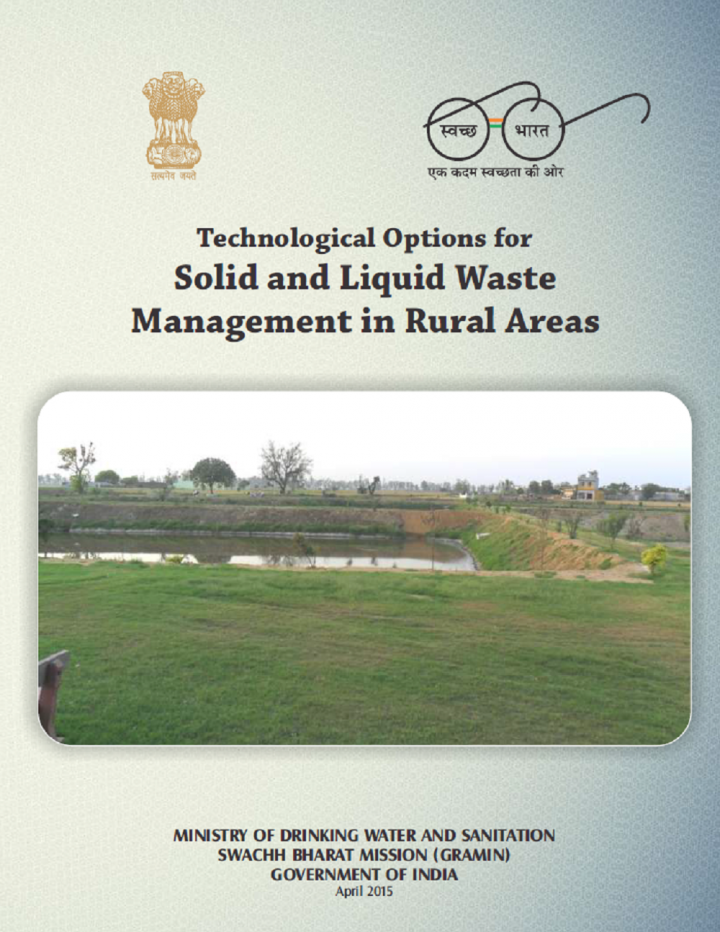Technological Options for Solid and Liquid Waste Management in Rural Areas - Swachh Bharat Mission (GRAMIN)
Ministry of Drinking Water and Sanitation, Government of India (2015)

Published in: 2015
Pages: 68
Publisher:
Government of India
Author:
Ministry of Drinking Water and Sanitation, Government of India
Uploaded by:
SuSanA Admin
Partner profile:
common upload
21701 Views
3199 Downloads
Location of library entry
Content - Summary
There exist a direct relationship between sanitation, health and human well-being. To accelerate the efforts to achieve universal sanitation coverage and to put focus on sanitation, The Prime Minister of India launched the Swachh Bharat Mission that aims to achieve Swachh Bharat by 2nd October, 2019, which in rural areas shall mean improving the levels of cleanliness though Solid and Liquid Waste Management activities and making Gram Panchayats Open Defecarion Free (ODF) and clean. Proper Management of solid and liquid wastes in rural areas has been a major challenge for all concerned stakeholders. To achieve the goal of Swachh Bharat Mission-Gramin (SBM-G), adequate efforts are required to improve environmental sanitation including management of solid and liquid wastes at household as well as community levels through sustainable methods. In rural areas, most of the solid and liquid wastes are of organic nature. There is ample chance of safe recycling and reuse of such wastes for economical uses.
Improvement of sanitation is a socio-technical issue. Required impact of waste management can be achieved through social mobilization supported by socio-culturally acceptable and economically affordable technologies. The book describes several technologies for solid and liquid waste management. There are several options for solid and liquid waste management SLWM, suitable for different socio-economic groups of communities.
Bibliographic information
Ministry of Drinking Water and Sanitation, Government of India (2015). Technological Options for Solid and Liquid Waste Management in Rural Areas - Swachh Bharat Mission (GRAMIN). Government of India
Filter tags
East Asia & Pacific English Peri-urban Rural















